Discover 11 hidden attractions, cool sights, and unusual things to do in Framingham (United States). Don't miss out on these must-see attractions: Garden in the Woods, Danforth Art, and Learned Pond. Also, be sure to include Framingham Reservoir No. 3 Dam and Gatehouse in your itinerary.
Below, you can find the list of the most amazing places you should visit in Framingham (Massachusetts).
Table of Contents
Garden in the Woods

Forested botanical garden with plant club. Garden in the Woods is a 45 acres woodland botanical garden located at 180 Hemenway Road, in Framingham, Massachusetts, United States. It is the headquarters of Native Plant Trust, and open to visitors between mid-April and mid-October.
Garden in the Woods was founded in 1931, when Will C. Curtis purchased 30 acres (121,000 m2) in North Framingham, and began to create a botanical garden on the site. When Curtis died in 1965, the land and gardens were deeded to the New England Wild Flower Society.
The Garden is the largest landscaped collection of wildflowers in New England, containing more than 1700 kinds of plants representing about 1000 species, including more than 200 rare and endangered native species, all within a mature oak forest on glacial terrain of rolling hills, ponds, and streams that provide a variety of microhabitats. Garden in the Woods also contains the largest retail native plant nursery in New England.[1]
Address: 180 Hemenway Rd, 01701-2636 Framingham (Framingham)
Danforth Art
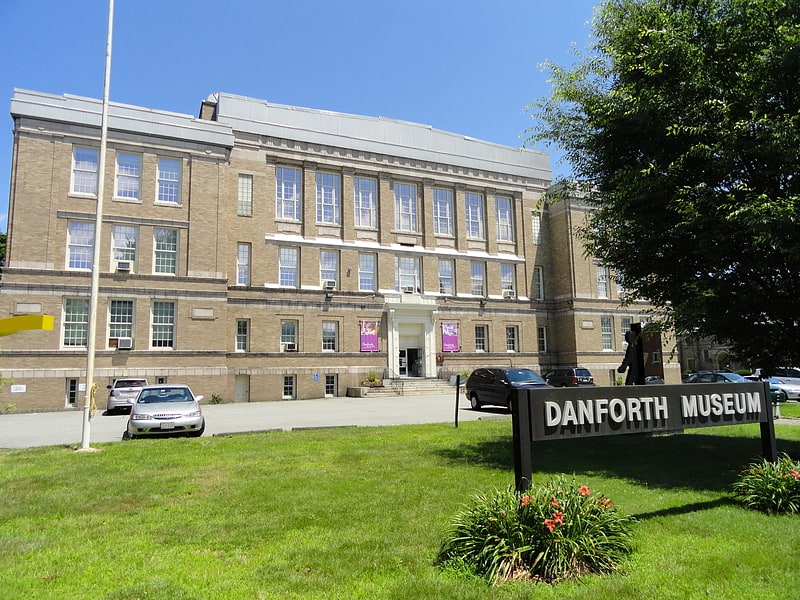
Museum in Framingham, Massachusetts. Danforth Art Museum at Framingham State University is a museum and school in Framingham, Massachusetts. It is part of Framingham State University.[2]
Address: 14 Vernon St, 01701 Framingham (Framingham)
Learned Pond
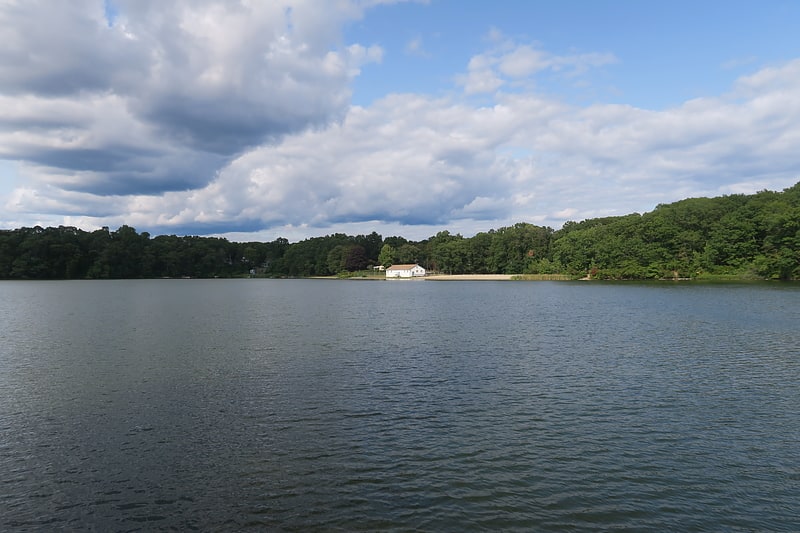
Pond in Massachusetts. Learned Pond was formed during the last glaciation. It is next to Brigham Road and Union Ave in Framingham, Massachusetts next to MetroWest Medical Center at an elevation of 165 ft. The pond has a beach and is surrounded in parts by woods.[3]
Framingham Reservoir No. 3 Dam and Gatehouse
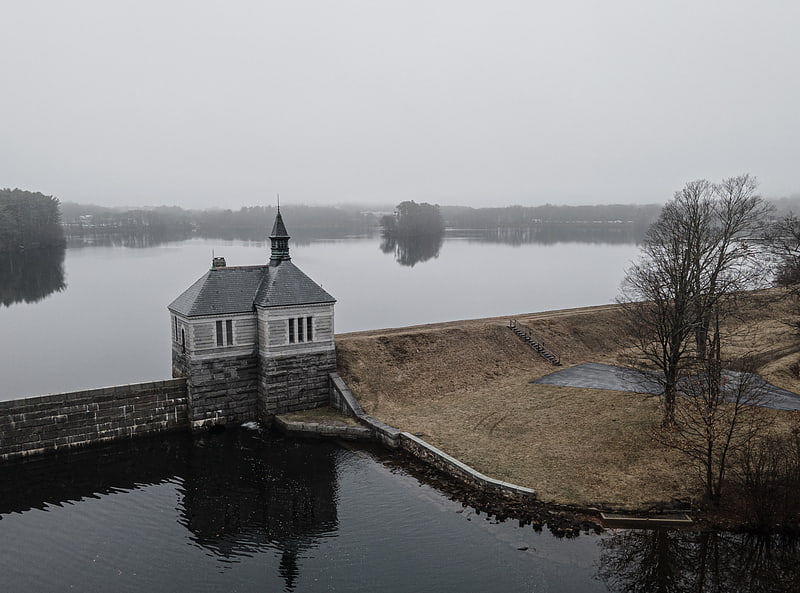
The Framingham Reservoir No. 3 Dam and Gatehouse is a historic waterworks facility in Framingham, Massachusetts. The dam and gatehouse are located at the southeastern end of Framingham Reservoir No. 3, off Massachusetts Route 9. They were built 1876–78 as part of an expansion of the public water supply of the city of Boston. The dam is 2,280 feet long, and impounds an area of 253 acres in the Sudbury River watershed. The reservoir is the largest of the three Framingham reservoirs that were built at that time. The dam's core is constructed of granite rubble laid in cement. There is a granite-lined overfall area 100 feet long, which was originally topped by flashboards. At the end of the overfall area nearest Route 9 stands the gatehouse, a granite structure with a rectangular main block and a smaller wing. Both sections have a steeply pitched slate roof. The door is in a round-arch recess, and the building is capped by a cupola. It houses controls for two 4-foot mains connected to the Sudbury Aqueduct via the gatehouse at Reservoir No. 1. The water is directed either directly beyond the dam into reservoir 1 or through the 4-foot mains to the Sudbury Aqueduct gatehouse.
The dam was built by contractors from Worcester, and the gatehouse was built by Benjamin Dewing of Boston to a design by the Boston city architect, George Clough. Since its construction, the reservoir, which is also known as the Foss Reservoir, has been connected by an open channel to the Sudbury Reservoir (in 1898), and had its shore areas resurfaced (in 1907–08). Nearly all of the reservoir's water comes from the Sudbury Reservoir as its own natural watershed is very limited. Of the Framingham Reservoirs, Reservoir #3 is the only one that was regularly used throughout its time as an active water source due to its better water quality than the reservoirs to the south. The reservoir is no longer in active service though it is maintained as an emergency source. It is the only one of the Framingham reservoirs still maintained as an emergency source. The dam and gatehouse were listed on the National Register of Historic Places in 1990.[4]
Framingham Reservoir No. 1 Dam and Gatehouse
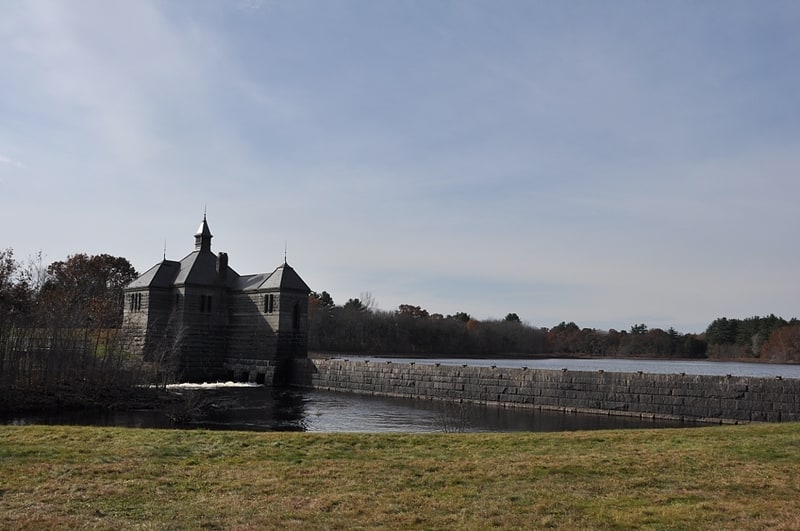
The Framingham Reservoir No. 1 Dam and Gatehouse is a historic water works facility in Framingham, Massachusetts. This complex is located at the end of Framingham Reservoir No. 1, which is also known as the Stearns Reservoir, off Winter Street and north of Long Avenue. Constructed from 1876 to 1878 as part of an expansion of the water supply of the city of Boston, this was designed by its first city architect George A. Clough. The historical purpose of the reservoir, which was located at the confluence of two branches of the Sudbury River, was primarily to control the river's water level, and secondarily to provide reserve supply capacity. The reservoir's reserve capacity was generally used only as a backup supply, as the reservoir's muddy bottom made it a less desirable source than reservoir No. 3 upstream. However the reservoir No. 1 system was nonetheless important due to its role in controlling the flow of the river downstream, and due to the gatehouse which controlled the water flows for all the Framingham reservoirs into the Sudbury Aqueduct. Reservoir No. 1 is no longer maintained as a reserve water source, although it is still owned by the Massachusetts Water Resources Authority, successor to the Boston Water Board which oversaw its construction. MWRA retains ownership as the gatehouse contains the connection between Reservoir No. 3 and the Sudbury Aqueudct which remain part of the emergency water systems.
The dam measures 793 feet (242 m) in length, with an overfall area that is 169 feet (52 m) long. The embankments are 20 feet (6.1 m) wide, with a core of granite rubble laid in cement. The overfall area is topped with cut granite, and originally had wooden flashboards held in by pins. The gatehouse is a 1+1⁄2-story granite structure, designed by Boston city architect George Clough. Located at the southern end of the overfall, it houses one end of the Sudbury Aqueduct extension pipe from Farm Pond, a 4-foot (1.2 m) pipe connecting this reservoir to numbers 2 and 3, and gates for channeling water either into the aqueduct or into the river. The gates allowed water to be selectively channeled from any of the reservoirs (1, 2, or 3) into the Sudbury Aqueduct or into the river below the dam. There are also flood gates and equipment for moving the dam's flashboards. Today the gatehouse, Sudbury Aqueduct, and the pipes from reservoir number 3 remain part of MWRA's emergency systems. If activated, the water from reservoir number 3 flows from the dam number 1 gatehouse down the Sudbury Aqueduct extension pipe to a gatehouse at Farm Pond where it enters the Sudbury Aqueduct proper which in turn brings the water to the Chestnut Hill Reservoir.
The dam and gatehouse were listed on the National Register of Historic Places in 1990.[5]
Framingham Town Hall

Entertainment, Library
Address: 49 Lexington St, 01702 Framingham (Framingham)
First Baptist Church

Baptist church in Framingham, Massachusetts. The First Baptist Church is an historic Baptist church on 1013 Worcester Road in Framingham, Massachusetts.[6]
Address: 1013 Worcester Rd, 01701-5237 Framingham (Framingham)
Framingham Reservoir No. 2 Dam and Gatehouse

The Framingham Reservoir No. 2 Dam and Gatehouse is a historic water works facility in Framingham, Massachusetts. The dam and gatehouse are located west of the junction of Winter and Fountain Streets, and impound a branch of the Sudbury River. The reservoir, which is also known as the Brackett Reservoir, was built 1877-79 as part of an expansion of the water supply of the city of Boston. The dam is 1,376 feet in length, with a centered overfall area. The core of the dam is granite rubble laid in cement, with earthen embankments. The overfall area is faced on the downstream side with cut granite, and earthen embankment on the upstream side. It is topped with granite and originally had iron mounts for flashboards. The gatehouse is a rectangular granite structure with a steep hip roof, a brick chimney and an eyebrow dormer. The door and windows are in round-arch openings. It contains gate controls for regulating water flow from the reservoir and from a 4-foot pipe connected to Reservoir No. 1, and a 2-foot pipe connected to the Ashland Reservoir.
The dam was built by contractors from upstate New York, and the gatehouse was built by James Fagin of Boston to a design by the Boston city architect, George Clough. The Metropolitan Water Board, established in 1895 to oversee the city's water supply, took the reservoir out of service soon afterward due to its poor water quality.
The dam and gatehouse were listed on the National Register of Historic Places in 1990.[7]
Fountain Street Studios
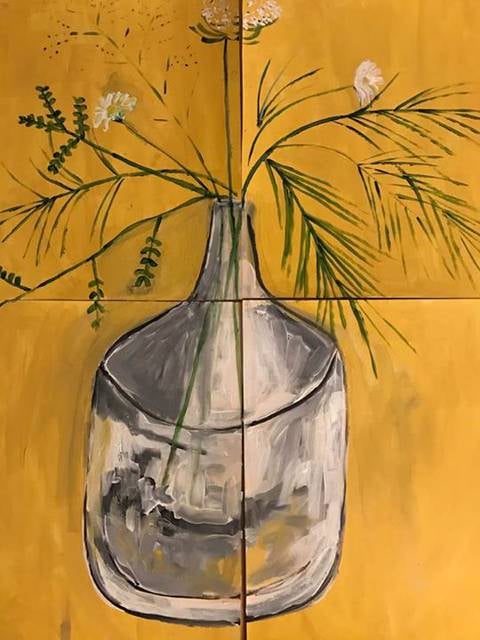
Art gallery, Bridge
Address: 59 Fountain St, 01702 Framingham (Framingham)
St. John's Episcopal Church
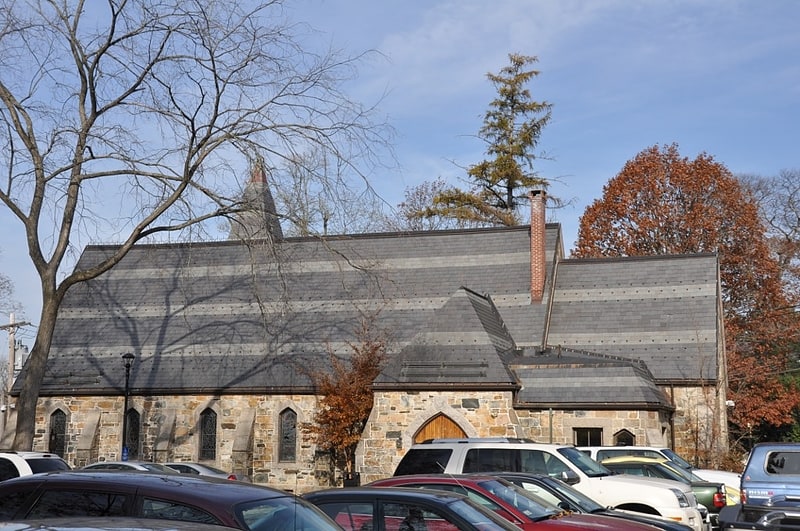
Church building in Framingham, Massachusetts. The former St. John's Episcopal Church is an historic church building on Maynard Road and Church Street in Framingham, Massachusetts. It is now the Heineman Ecumenical Center at Framingham State University. The university acquired the building in 1969. The church building was designed by local architect Alexander Rice Esty, and was built in 1871. Esty was a member of the congregation for which it was built, and donated his services.
The building was listed on the National Register of Historic Places on January 12, 1990.[8]
Paul Gibbs House
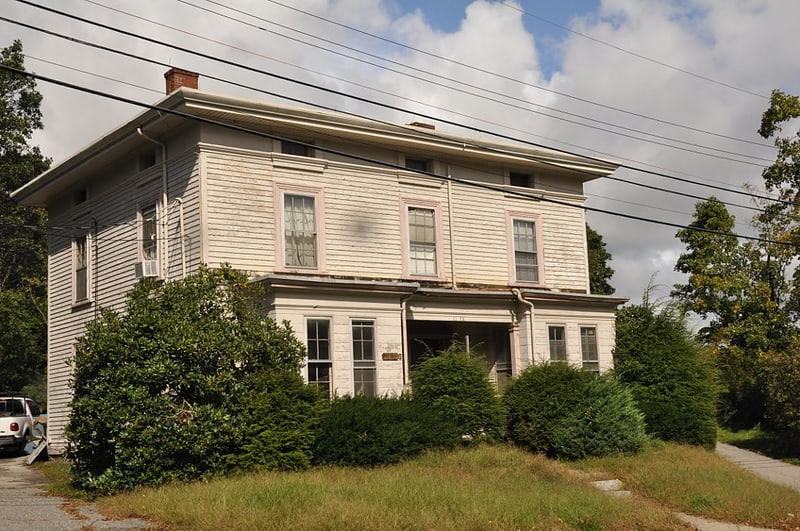
The Paul Gibbs House is a historic house at 1147 Edmands Road in Framingham, Massachusetts, USA. Built in 1860 for a member of a prominent local family, it is a good example of Italianate architecture, probably the work of noted local architect Alexander Rice Esty. The house was listed on the National Register of Historic Places in 1983.[9]